Engine Valves & Guides
We have one of the biggest range of Engine Valves and Guides in the UK. We keep valvetrain components for all makes & models of cars & light commercial vehicles. We stock valves & guides from Italian manufacturers Freccia & Osvat as well as the well-known AE brand which is part of the Federal-Mogul Group. All of our products meet the UNI EN ISO 9002 standard and are manufactured to the OEM (Original Equipment Manufacturers) specification.
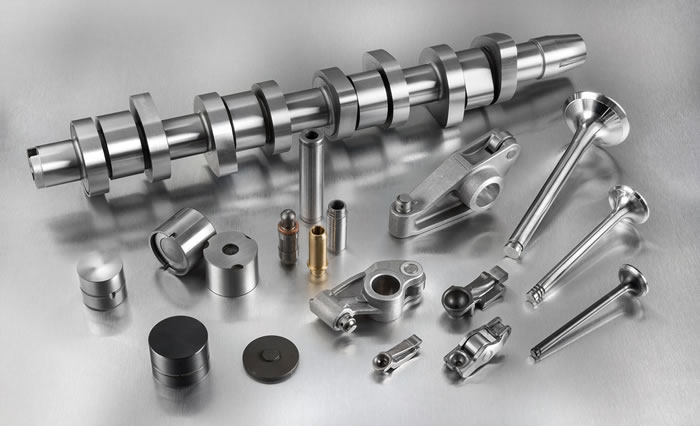

Valves
Engine Valves are constructed in 2 parts, the head & the stem. Both parts are fused together. In performance applications, valves may be forged in one piece. The valve has grooves at the end of the stem for the valve collets to hold the assembly of the spring & spring cap in place. Broken or bent valves are the result of piston contact if the engine timing is incorrect
Valve Guides
A valve guide is a narrow tubular piece of metal that can be made from cast iron, Bronze or other composite alloys. On certain engines, these guides can crack if there is a timing failure. This is more common with cast iron guides. Guides can come with different designs, some have circlips, recesses, grooves, protrusions & tapers. The valve guide helps to disperse heat from the combustion area to the cylinder head. Valve guides do wear after time or when engines are used outside their normal operating conditions. These should be checked by your local engine reconditioner.
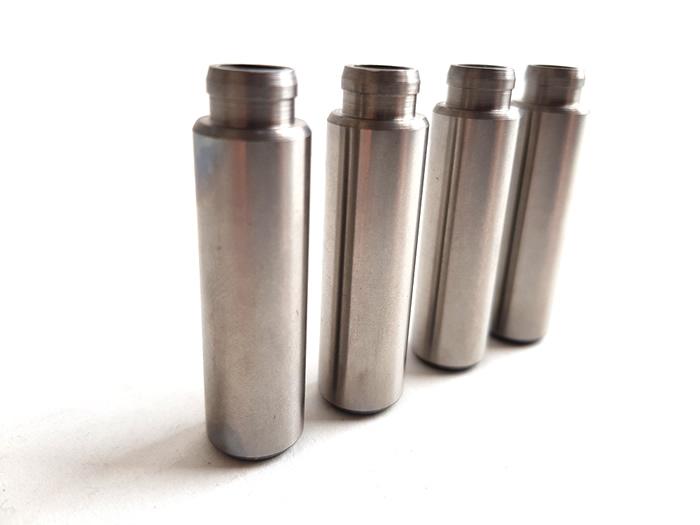
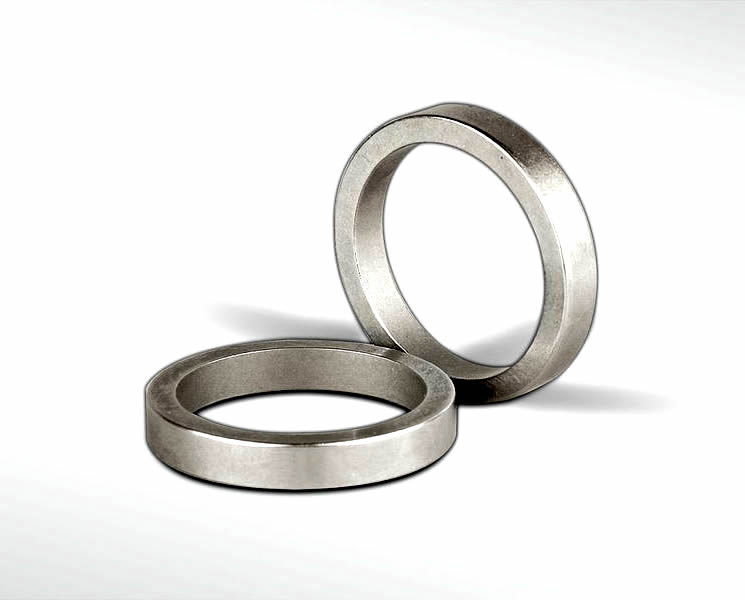
Valve Seat Inserts
We have a range of AE valve seat inserts available. They are listed by size that will need to be engineered to fit. Valve seats are usually replaced in older cars that are being converted to run with unleaded petrol. If an engine has suffered from a timing failure on interference engines the broken valve may cause sufficient damage to the valve seat which may result in the need for the seats to be replaced. This should only be carried out by a competent person. If incorrectly fitted, the seat may become loose and cause catastrophic engine failure.
Tappet Shims
We stock a wide range of shims in different sizes. Shims are fitted to mechanical cam buckets and are needed to achieve the correct valve clearance. Engines with hydraulic lifters do not require valve shims.
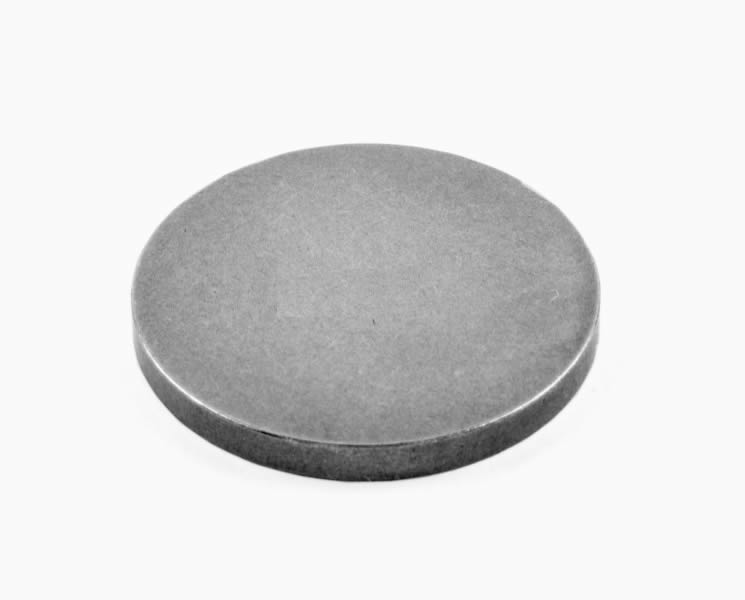
Our Valvetrain Catalogues
Trouble Tracer Chart
Excessive valve stem and guide wear
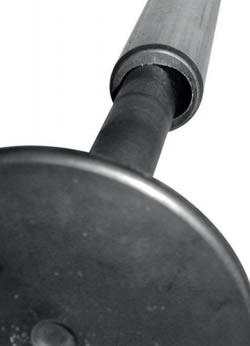
Symptom: Valve gear noise, high oil consumption, exhaust smoke on initial start-up.
Cause: Too great or too small valve stem to guide clearance. Poor valve stem lubrication or ingress of dirt through the air intake system. It should be noted that the cause of this problem is not always obvious. Unless the cause is readily apparent, additional advice should be sought.
Remedy: Ensure correct engine valves and guides are fitted. Check alignment, valve stem to guide clearances, valve stem seals and lubrication system.
“Gutter“ burnt through valve rim
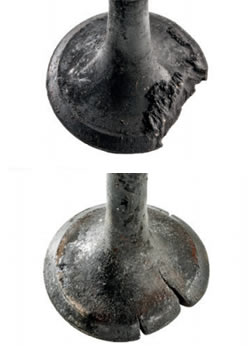
Symptom: Loss of power. Rough running.
Cause: Valve clearance is too small holding the valve off its seat. Sticking stem, poor/uneven seating or misalignment of the valve assembly. Overheating from pre-ignition. Excessive build-up of carbon which flakes off the valve face to form a gas leakage path. Hard carbon particles peen into the seat surface until enough indentations line up to form a gas leakage path.
Remedy: Ensure valve clearance is to specification. Check the stem to guide clearance and for any misalignment of the valve assembly. Check engine timing, carburettor settings and injection timing.
Valve head breaking off stem
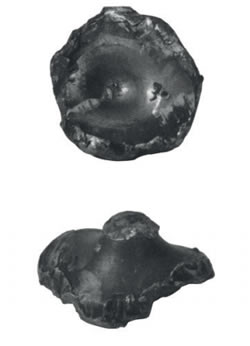
Symptom: Rough engine with sudden mechanical noise.
Cause: Mechanical overload, such as seating velocity too high from excessive valve clearances (see the graph of cam lift). Valve bounce, valve-to-piston contact caused by overspeeding, weak or broken valve springs or sticking valve stem. Uneven seating due to misalignment or distorted valve.
Remedy: This May not be possible due to the extreme damage this failure can cause, however, Check valve springs, guides and alignment and repair where necessary. Check seat guides, pistons and bores for damage. Reset the valve clearances.
Inlet valve underhead carbon build-up

Symptom: Poor starting. Loss of power. Blue smoke from exhaust (when throttle closed).
Cause: Excessive clearance between valve stem and guide. Valve stem seal failure or wear. Excessive oil supply due to blocked drainage paths. Incorrect grade of lubricating oil used.
Remedy: Check valve stems, guides and stem seals for wear and replace them where necessary. Ensure there is no blockage in the engine drainage or breathing systems.
Stem breakage through collet groove
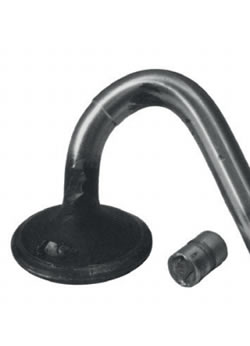
Symptom: Excessive mechanical noise, bent stem and possible head detachment.
Cause: Poor assembly allowing uneven loading. Poor handling, dropping etc. Bouncing the valve after fitting by hitting the tip with a hammer. Valve bounce from excessive seating velocity.
Remedy: This May not be possible due to the extreme damage this failure can cause, however, Check seats, guides, springs, pistons and bores for damage and repair where necessary. Do not overspeed the engine.
Blow hole through valve head, starting from a radial crack
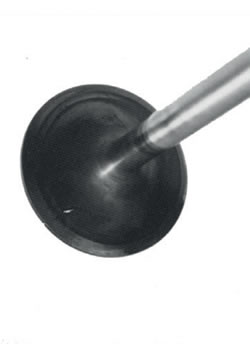
Symptom: Rough running. Loss of compression. Poor starting.
Cause: Similar to a segmental breakage, but gas escapes through the crack and burns a hole. Extreme thermal cycles (continual sudden changing from full power to shut down). Damage marks on the rim produce stress raisers. Mechanical overload from valve bounce.
Remedy: Check remaining valves for signs of cracking and replace them where necessary. Ensure the correct valves have been used. Check engine settings, valve springs, guides and followers. Do not over rev the engine.
Scuffed/sticking valve stem
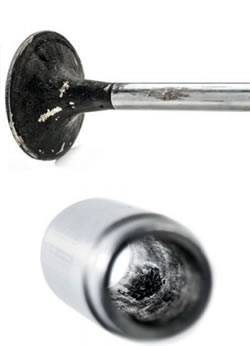
Symptom: Poor performance due to low compression. Mechanical breakage due to sticking valves.
Cause: Marginal lubrication from inadequate valve to stem clearance, causing scuffing or metal transfer. This may ream out the valve guide leading to the second cause, excessive oil from too great a clearance carbonising on the stem to cause sticking.
Remedy: Ensure the valve stem to guide clearance is to specification. Ensure the correct valve stem seals have been used. Replace worn components where necessary.
Valve Breakages – Fracture at lower cotter groove
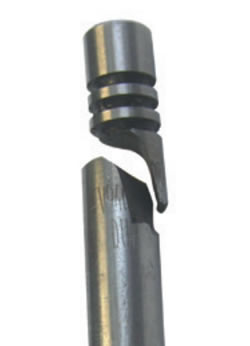
Symptom: Valve breakage shortly after a cylinder head rebuild, during initial start-up or during a test run.
Cause: Overextension / “pump-up” of hydraulic lifters (photo 1). Incorrect seating of the valve spring to the cylinder head (photo 2). Engine over-speed or weak valve springs.
Remedy: Whenever possible fit new hydraulic lifters, when new valves are fitted. Ensure the engine block has been thoroughly cleaned to remove all traces of debris. Take extreme care to seat all valve springs correctly in the recess of the cylinder head. Renew engine oil and replace oil and air filters.


